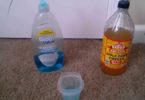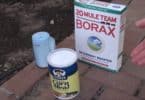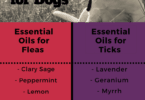Black ants may not be painfully stinging insects like red ants are, but that doesn’t mean they are welcomed in your home. Nor does it mean that they are easy to get rid of once they are in your home. They can be controlled though, and it may not require poisons or chemicals. It mostly depends on how-well established the ants are and how persistent you can be.
So what brings these little pests to your house?
Black ants are invading your space for one, and only one, reason. They see your home as a restaurant that’s always open with a menu that has all their favorite dishes. It’s just the kind of place they are desperate to tell their friends about. Ants are enormously social creatures with a highly-organized society. It’s an ant’s mission in life to tell his buddies all about the good thing that’s happening on your kitchen counter.
How to get rid of the black ants
The first order of business is to shut down the buffet. Do the dishes regularly. Wipe down counters, preferably with a bleach solution. This will help remove the chemical trails that ants leave behind so their buddies can find their way to the food. Mop floors with that same bleach solution. The important thing to note about black ants is that they love their sweets. A few spilled grains of sugar here and there, which you might barely notice, are number one on their list of favorite foods. Black ants like a nice beverage with their meal, so it’s also important to keep things dry. For instance, eliminate any standing water in the sink.
All foods should be kept in tightly-sealed containers. Pet food can be a problem, particularly if there’s a bowl of it that’s regularly left out. One approach that may be worth trying is to create a moat by putting Fido’s food bowl inside a larger bowl and filling the larger bowl with water.
Along with depriving black ants of a reason to come visiting, it’s worth trying to cut off their access. This means sealing door and window sills with silicon caulking, which gives the added bonus of providing some additional energy efficiency by cutting down on drafts. Mend any broken screens. This method also has the benefit of being child-friendly and pet-friendly.
However, ants are awfully good at finding tiny chinks in the armor and that’s all they need to set up shop. If you have an idea of what route they’re taking, there are a number of substances you can sprinkle in those spots as a deterrent. The most basic and safest are salt and cornmeal. The idea of using salt is that it will kill the ants by absorbing water from their bodies. Use cornmeal in the hope that the ants will eat some, have some water and then die as the cornmeal swells inside them.
Other substances that some people swear by are bay leaves, whole cloves, cayenne or black pepper, and cinnamon. The idea here is that the ants will be attracted to the bait, typically because it has been sweetened. Then they will bring some of it with them as they return to the nest. The most common poison used in baits is boric acid, which is non-toxic to humans. It can be mixed with corn syrup or maple syrup or a water-sugar solution. There are also plenty of commercially produced baits that work on this same principle.
Once you have the bait, don’t just put it out there, as you may end up attracting a whole new colony. Instead, remove any of the deterrents you have put down and place the bait next to the trail of ants that show up. You don’t want to interfere with the route back to the nest, since the hope is that the little invaders will bring the poison back to their home. This is a tricky prospect, since you want the ants returning to the nest with enough poison to do some real damage. You don’t want them dying on the way home before they deliver the poison or getting there carrying a dose that’s too low to have much effect.
For more on ants, black or otherwise, and for some information on the truly toxic heavy-hitters of ant control, visit your local agricultural extension office. Or go to sites like the one provided by the University of Minnesota, which has a comprehensive treatment of the subject. There are also numerous tutorial videos on how to get rid of black ants on YouTube and various exterminators’ websites.
For more on ants, black and otherwise, and for some information on the truly toxic heavy-hitters of ant control, the University of Minnesota has a comprehensive treatment of the subject at
http://www.extension.umn.edu/distribution/housingandclothing/M1166.html.
<>







